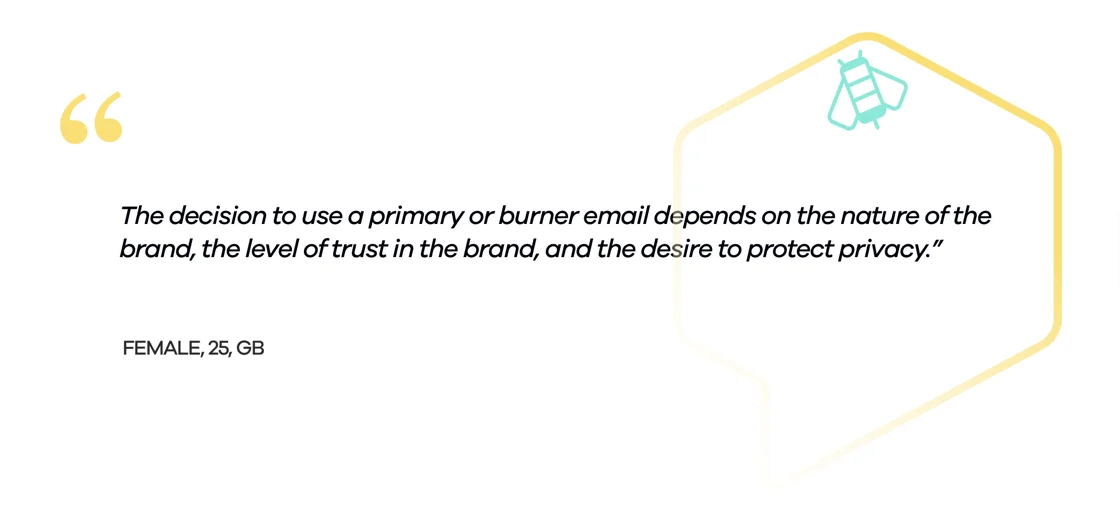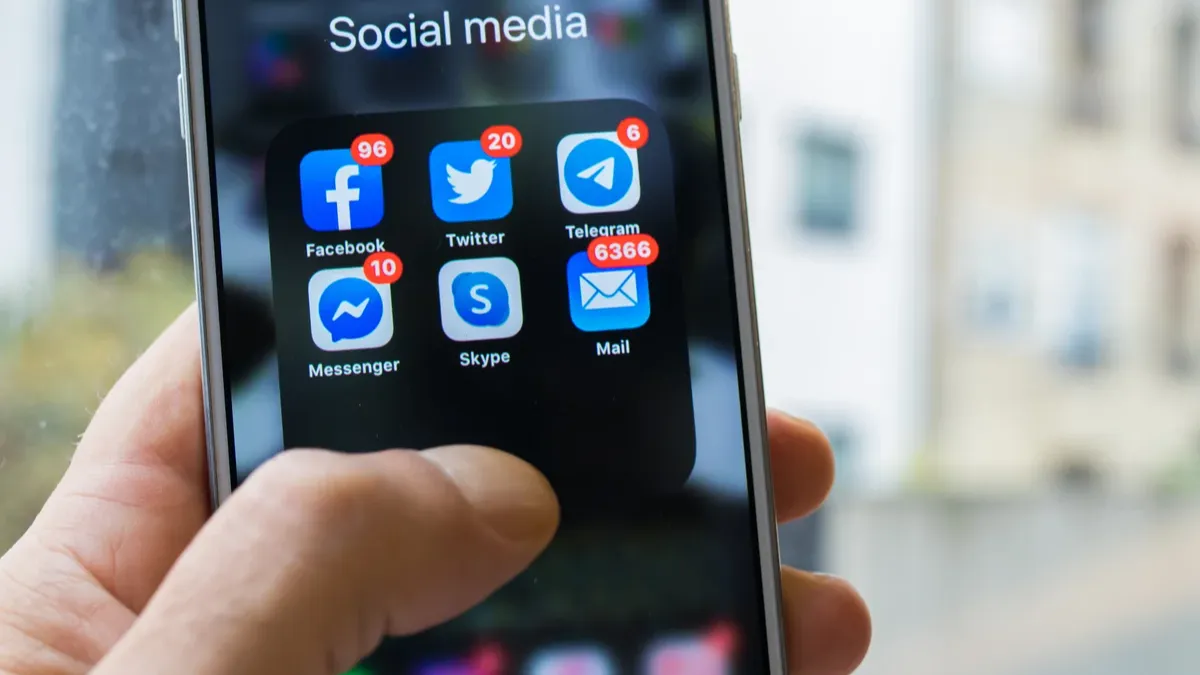Burner emails have never been hotter.
(Burner email: A secondary or temporary email address used to shield your primary inbox from spam, marketing messages, or unwanted communication.)
These days, giving out your email is the price of entry to almost anything online; shopping, reading, registering, accessing content. And people are getting tired of paying for it.
As promotional fatigue sets in and inboxes overflow, more and more consumers are using secondary or alias email addresses to keep unwanted brand messages at bay. To get beneath the surface of what's actually going on with these 'burner' accounts, we spoke to 315 consumers across the UK using our insights platform, SBX.
We found that what used to be a privacy niche has gone mainstream: our research shows that 60% of UK respondents now use at least one burner email, and 28% use two. Of those users, 42% rely on them weekly, and an eye-opening 38% use them daily.
What's lighting this fuse?
The primary driver for not using their primary email address? Spam avoidance. An overwhelming 60% of consumers told us they use their burner emails to steer clear of promotional noise - outpacing concerns around security (23%) or inbox management (27%). It’s a clear sign that consumers are no longer passively tolerating irrelevant or repetitive emails. They’re actively opting out (literally checking the ‘opt out’ button), or doing so by providing a burner email.
And the brands themselves are at the heart of this disengagement. When asked what frustrates them most, 71% of consumers said spam and repetitive content, while 40% pointed to marketing messages they never asked for in the first place. Burner emails aren’t just a symptom of a privacy-first world; they’re a reaction to the way many brands have handled email marketing until now.
Some brands, acutely aware of the trend, are playing both sides of the ‘burner’ battle. While traditional burner emails remain the most common tactic, tools like Apple’s Hide My Email and Firefox Relay offer alias-generating features that serve a similar purpose: helping users avoid giving out their real email address. These features, while not exactly the same, demonstrate an awareness of the consumer trend from the brand side — and reflect the same core intent from consumers: keeping brand contact at arm’s length.
Marie Kondo your mailbox
But it’s not just about escaping spam. There are practical benefits too. 43% of respondents said that burner emails help reduce inbox clutter, while 29% cited enhanced online safety and 23% highlighted protection from scams. Interestingly, fewer respondents mentioned privacy-first motivations like anonymity (22%) or data control (18%) - suggesting that for most people, burner emails are more about mailbox minimalism than privacy purism.
Rely on your reputation to avoid bridges being burned
So what pushes someone to give a brand a burner email? Trust. Or lack of it. Brand reputation emerged as a key influence, with 39% of consumers saying it affects whether they use a primary or burner address. As one respondent put it:

That trust extends into expectations around email content. Relevance and restraint are non-negotiables: 41% of consumers want more personalised promotions, and 35% want brands to communicate less often. Transparency also matters, with 11% wanting clear unsubscribe options, and 14% expecting better assurances around privacy and data use. These aren't just hygiene factors anymore, they are differentiators.
How can brands (aloe)veer-a-way from being burned?
For marketers, this shift poses both a challenge and an opportunity. On one hand, burner and alias emails can wreak havoc on performance measurement - making it harder to track actual reach, skewing open rates, and inflating databases with low-intent contacts. But on the other hand, it’s also a clear mandate to raise the bar.
Some tactics that are already being deployed by brands centre around tightening up data practices: using real-time email validation at sign-up, introducing double opt-in flows, and regularly scrubbing lists to remove inactive or disengaged subscribers.
But brands also need to ask a bigger question: if someone gives you a burner email, do they really want to engage with you? And if not by email, how can you effectively reach these audiences?
Thinking outside of the (mail)box
Alternative channels are increasingly filling the space that email used to dominate. Email certainly isn’t dead, but our research suggests it is diluting. We found that a substantial 78% of respondents find other communication methods like SMS, WhatsApp, or in-app messaging to be quite or very effective. WhatsApp stands out in particular, with 48% naming it their preferred alternative, well ahead of SMS (28%) and social media messaging (22%).
From ghosted to engaged: How to reach inbox avoiders
This doesn’t mean brands should abandon email entirely, but for those who have experienced the dreaded fade-out, it might be time to adopt a more respectful, multi-channel approach. Almost half of consumers (46%) say they’re somewhat open to receiving brand messages through SMS or in-app notifications, and 23% are very open. Still, 31% aren’t very open or open at all - so brands must tread carefully. Pushy behaviour on WhatsApp won’t make up for pushy behaviour on email.
This 'burner email' behaviour may be subtle, but the signal is loud and clear. Consumers are telling us they want more control, more relevance, and less noise. The brands that win won’t just be the ones that send fewer emails - they’ll be the ones who can establish trust and truly earn a place in the inbox.
If you're curious about how to build that trust with your customers, tap into Streetbees' Brand & Comms Solution. Track how their demands and behaviours are evolving, and gain deeper insights into how to effectively communicate and engage your audiences.






